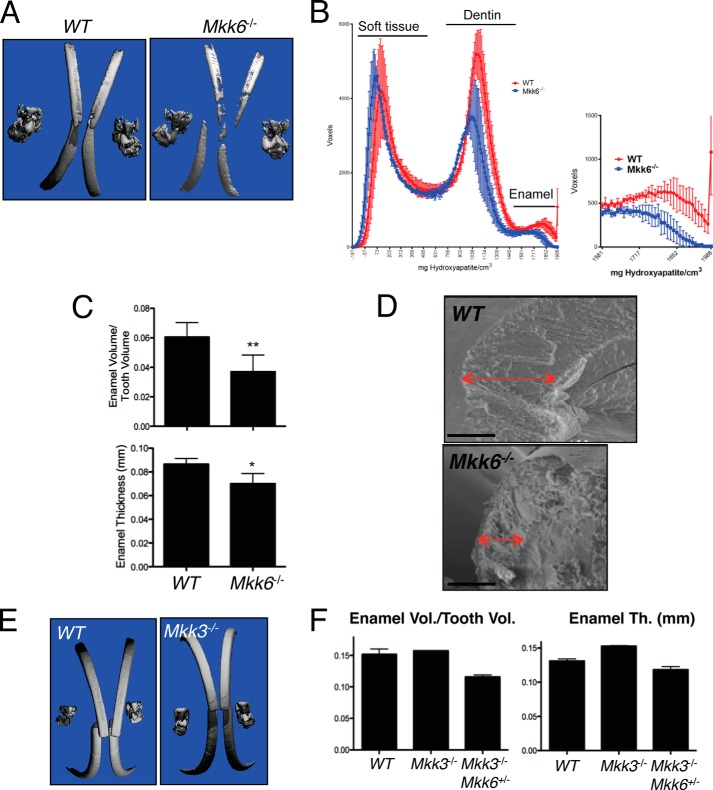FIGURE 4.
MKK6, but not MKK3, contributes to the formation of dental enamel. A, skulls of 3-week-old Mkk6−/− and WT mice were scanned by μCT. Displayed are three-dimensional reconstructions windowed so that only enamel densities are visible. B, histogram plotting density on the x-axis versus the volume in voxels corresponding to density in mandibular incisors from 3-week-old Mkk6−/− and WT mice. C, quantitation of enamel thickness (mm) and enamel volume relative to total tooth volume in the mandibular incisors of 3-week-old Mkk6−/− and WT mice. D, scanning electron microscopy analysis of Mkk6−/− and WT mandibular incisors, showing decreased enamel thickness in Mkk6−/− mice (red arrows). Bar, 100 μm. E, three-dimensional reconstruction of μCT scans of 5-week-old Mkk3−/− and WT mice, windowed to display only dental enamel. F, quantitation of enamel thickness (Th., mm) and enamel volume relative to total tooth volume in the mandibular incisors of 5-week-old Mkk3−/−, Mkk3−/−Mkk6+/−, and WT mice.

